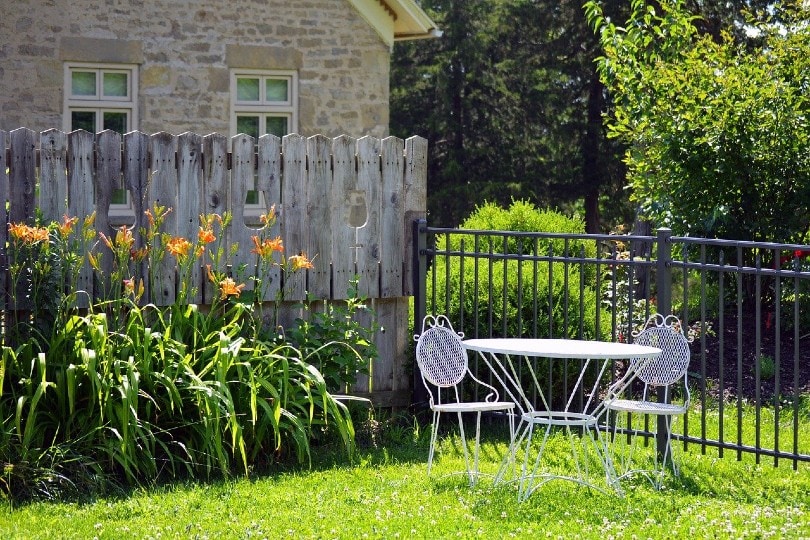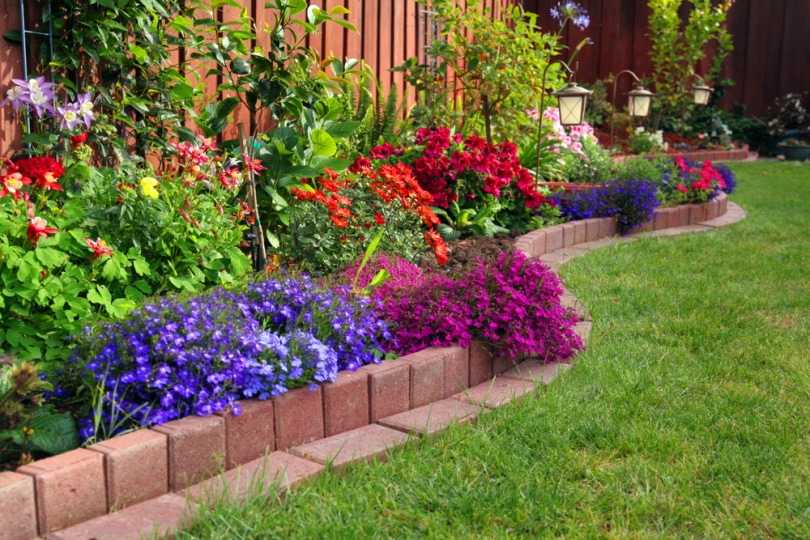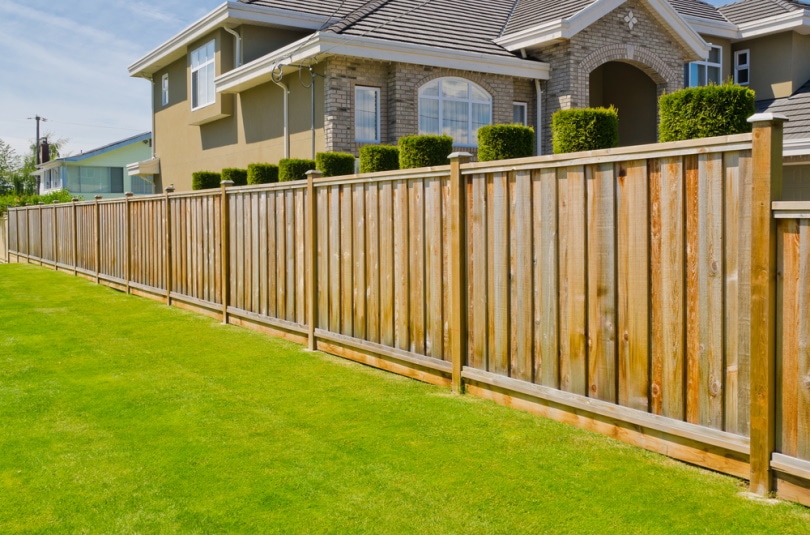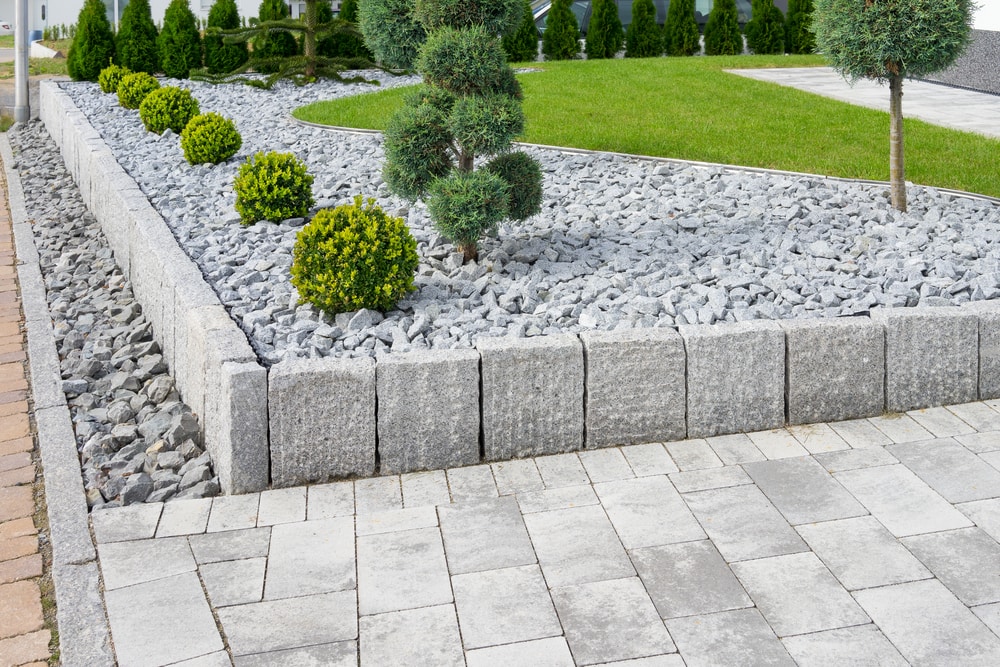How to Flood Proof Your Garden: 13 Effective Tips
-
Pete Ortiz
- Last updated:

Garden flooding can kill plants, but it also poses a risk to your home. Water leaches into the foundations, potentially causing structural movement. It can lead to basement flooding and may cause serious water damage, too.
Garden flooding is most often caused by prolonged periods of bad weather, but it may also arise from a flooded swimming pool or burst pipes. Fortunately, there are some flood-resistant landscaping techniques that you can implement in your garden design to help mitigate this risk. There are also some general garden and property maintenance practices to further reduce risks and these can be easier, quicker, and less costly to implement.
Below are 13 tips to flood proof your garden and help protect your garden and your home.
The 13 Tips On How to Flood Proof Your Garden
1. Level the Yard
If you have areas of the yard that slope towards the house, this can lead to basement flooding and problems with your foundations. Typically, yards and gardens should be sloped away from the home in all directions. Get professional help to ensure that you aren’t running rainwater into a neighbor’s garden or their home, though, or you could be liable for repairs to their home.
2. Use Native Plants
Native plants are adapted to the weather conditions in your area. They tend to have deep root systems that soak up a lot of moisture, and because they are native to your area, they should be easier to grow with less maintenance.
In fact, there are a lot of benefits to incorporating native plants, trees, and bushes in your garden, and they can help eliminate the threat of garden flooding.

3. Use Leafy Plants
Consider adding some leafy plants that like boggy conditions, if you regularly suffer from garden flooding caused by rain deluges.
Plants with large leaves tend to prefer boggier conditions and wet soil, which means that they will better utilize the rain that lands on your garden. If they’re local plants, even better, but you can also combine native plants with more exotic, large-leaved alternatives.
4. Add New Topsoil
Flooding caused by poor drainage could be a result of soil with poor drainage. This is especially a problem if the top layers of soil in your garden are laden with clay. When the soil is dry, add compost topsoil and a material like sawdust and mix it with your existing topsoil to create better-draining soil that is more likely to stop flooding.
5. Mulch Flower Beds
Mulch ensures that water stays in the soil, and it prevents a surface layer of water from forming. This enables you to stop the water running from the garden and towards your property.
Keep the mulch at least a few inches away from the walls of your home, though, because the water could sit against walls and cause rotting or moisture damage.

6. Aerate Your Lawn
Aeration is an important aspect of good lawn management. It allows the release of carbon dioxide and allows for better circulation of oxygen. It can prevent moss from growing in your lawn, and the holes that good aeration creates also let water seep down from the surface and into the roots and the soil below, helping reduce the risk of lawn flooding.
You can use a garden aerator, a garden fork, or a professional gardening service to ensure the job is done properly.
7. Plant New Grass
The roots of grass can be very effective at soaking up rainwater, but you should do your research to determine the best type of grass for the area where you live.
Plant new grass, if you have the space or can create the space, and once it has grown, don’t mow it too short. Do aerate it regularly to get the best drainage from your new grass.
8. Create a Rain Garden
A rain garden is designed so that it collects rainwater from gutters, driveways, and other runoff. The water is diverted away from your home and to an area of the garden that is filled with wild plants and flowers that flourish when they receive lots of water.
Do your research before starting a rain garden to ensure that you choose the right plants and use an appropriate plot in your garden.

9. Add Drainage
Whenever you add or change driveways, pathways, patios, and decking, you need to ensure they have good drainage. You can use spaced pavers or add channels next to the driveway and ensure the drive runs off into these channels and that the channels direct away from the house.
10. Install Water Butts
Water butts are placed under downspouts and collect rainwater. They prevent the water from hitting the ground in the first place, so it doesn’t have the chance to collect at all. The water can then be used to water plants and even to wash the car or house when there is no rainfall.
11. Erect a Retaining Wall
A retaining wall can be used to hold soil back, and it can also divert rainwater away from your home when it does flood. The retaining wall can double up as occasional seating or turned into a feature that tidies up the area around your home while also being highly functional. Materials that you can use for a retaining wall include natural stone or brick.

12. Maintain Drains
When drains and gutters get blocked, rainwater falls on the ground below rather than running down the drain as intended. This can lead to pooling and flooding and most often occurs right next to the property walls.
This is especially a problem in fall, when leaves naturally fall off overhanging trees and when rain is common. Get up and remove any fallen leaves and other debris to ensure rainwater can pass freely through the drainage system.
13. Maintain Your Sump Pump
If you do suffer flooding, the sump pump is one of your home’s last lines of defense. It removes water from the basement area and pumps it away from the house.
Before rainfall is expected, make sure your pump is working efficiently and regularly check that it is doing its job during the rainy season. If it fails or pumps inefficiently, you can be left with basement flooding, and this can cause serious problems for the whole of your house.
FAQ
Will a Raised Bed Stop Flooding?
Raised beds can help prevent flooding in certain areas of the garden, even when they are only raised a few inches off the ground. This is especially true if you suffer from hard soil, but you do need to ensure good drainage and control any runoff that occurs from the beds.
Raised beds also bring their own problems because drainage is prevented or slowed by the solid walls of the raised area. You will need to incorporate means of draining rainwater from the raised beds.
Does Gravel Stop Flooding?
Gravel can help prevent standing water because it has better-draining qualities than all types of soil. It can be used for driveways and paths, as an alternative to installing drainage ditches at the sides, and it can be placed around plants in areas that are especially prone to flooding.
Gravel can also be used in raised beds: by adding a layer of gravel to the bottom of the bed, water is allowed to drain through and is prevented from soaking the roots of the plants.
Conclusion
Garden flooding can be a major problem in some areas as well as having the potential to kill plants, cause moss growth, and even create a slip hazard for those that walk in the area. If the flooding is adjacent to the property itself, it can lead to flooding in the basement and water damage to the walls and the home itself.
Related Reads:
- HOW TO FLOOD PROOF YOUR HOME (10 EFFECTIVE TIPS)
- HOW TO PREVENT MOLD AFTER A FLOOD – 7 TIPS AND TRICKS
Featured Image Credit: spinheike, Pixabay
Contents



